Last Updated on June 22, 2023 by asoulwindow
This blog is about my experience in the rainforest of Agumbe, Karnataka, India . We spotted many species during our trails. It is one of the finest wildlife experiences in the Western Ghats of India.
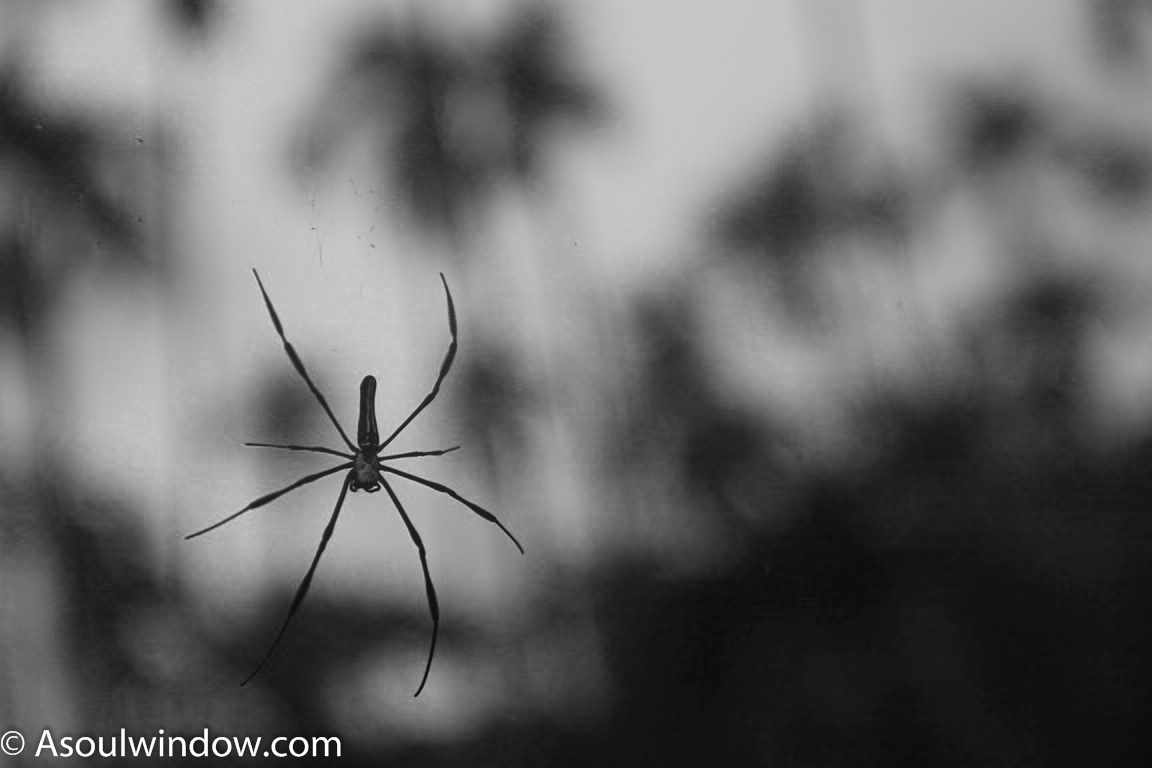
Agumbe is the wettest place in South India. For obvious reasons it is also known as the Cherrapunji of South India. In August 1946, the highest rainfall in a single month was recorded at 4,508 millimetres. In 2014 it even surpassed Cherrapunji when it received 5,625.4 mm rain. Agumbe received 7000mm rain on an average.
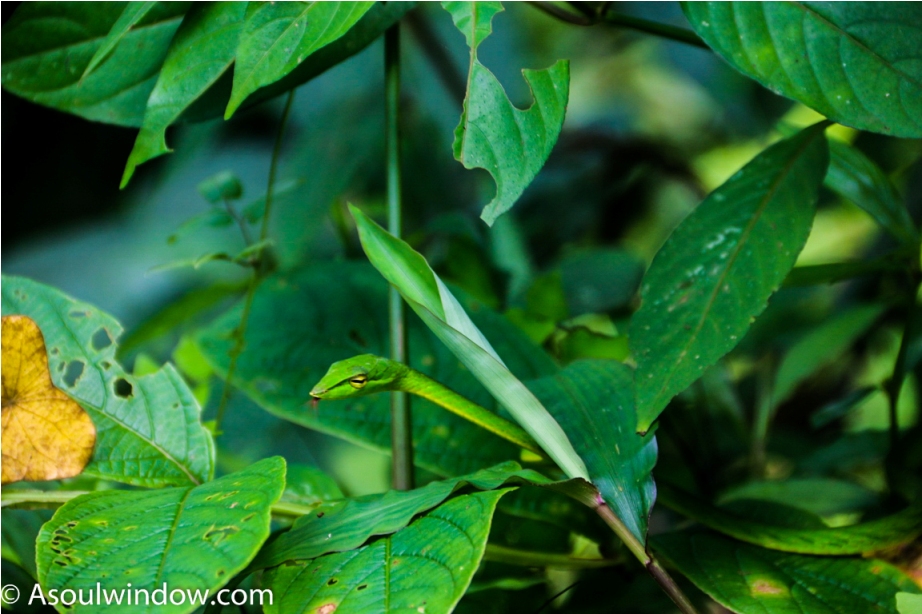
July is mostly the wettest month in Agumbe. Located in the Shimoga district of Karnataka in India, it is one of the richest bio diversity hot spot. The Western Ghats (World Heritage site, UNESCO) is home to some of the rarest species in India.

In my 2016 failed trip to Agumbe, I wandered around in vain trying to spot exotic species of snakes, amphibians, insects etc. My only wildlife experience in Agumbe that year was catching a fleeting glimpse of a long fat snake, few frogs and fish in a reservoir that gnawed at my feet.
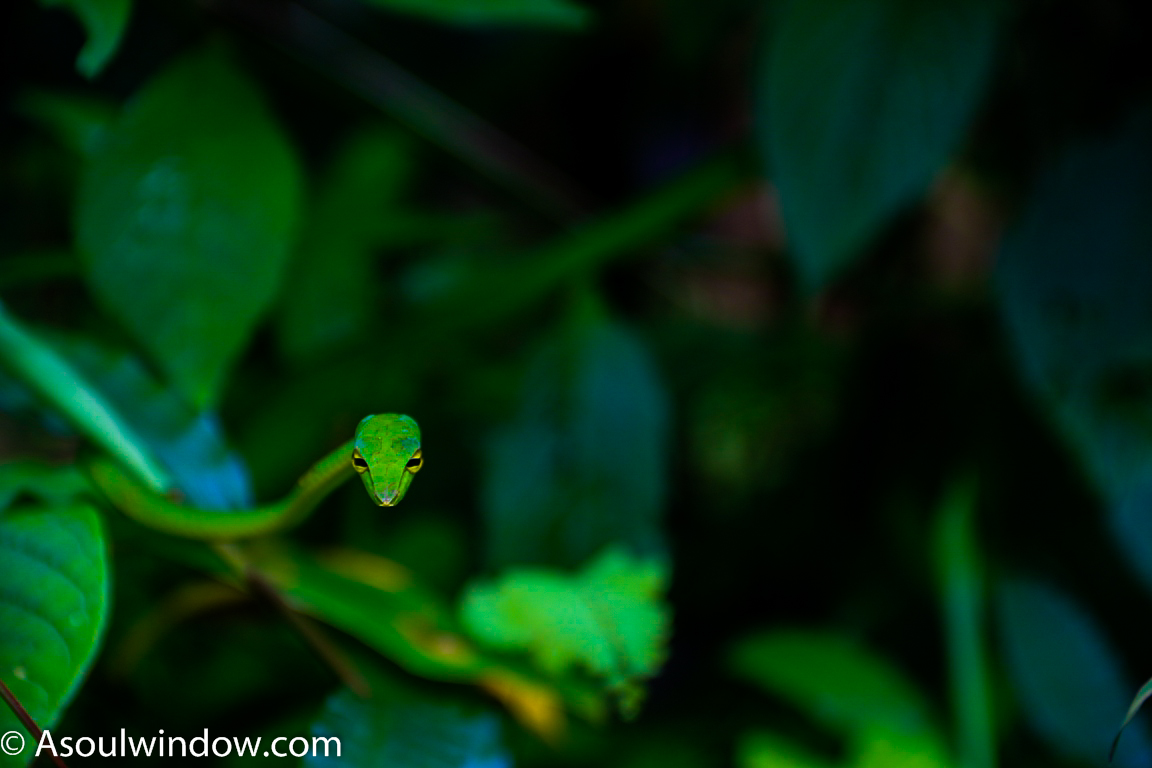
Little did I know that you need an expert’s guidance to spot the well camouflaged creatures. I visited again in 2017, this time under the tutelage of the i travel Group, a Mumbai based company founded by Ritesh Kadam. I was also better prepared to brave the rains this time. I wore a very effective rain jacket which had protected me through harsh rains during the trails.
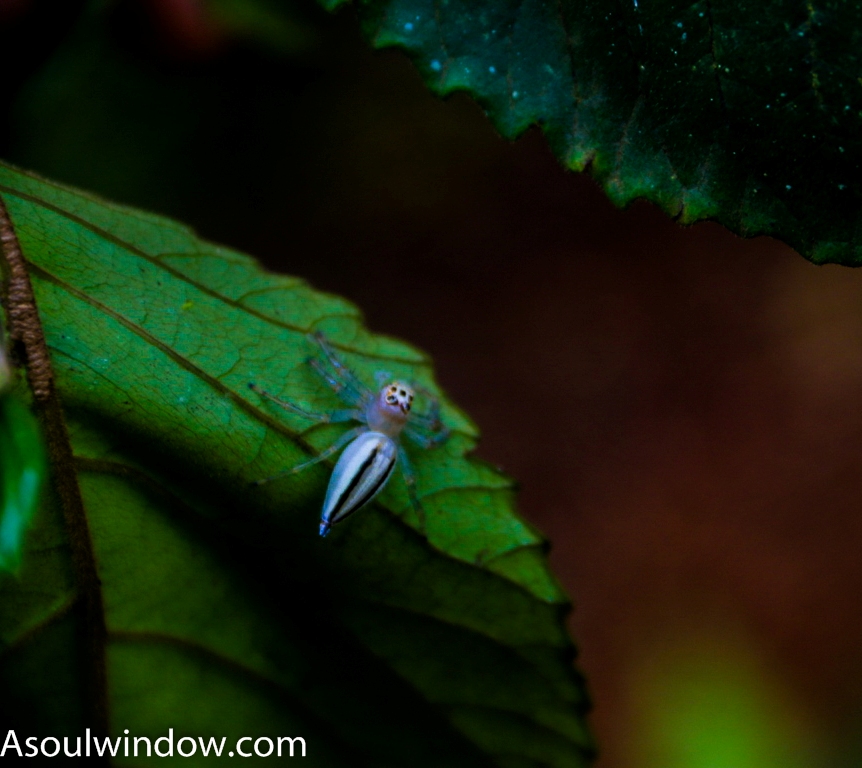
I have known Ritesh online since 2014. So, when he presented an offer to accompany him for the trip, I instantly agreed as I had admired the carefully curated trips he takes. It turned out to be the most enriching and intellectually stimulating experience of the year so far. Ritesh’s sincere passion for wildlife reflects in the way he handles wildlife expeditions.
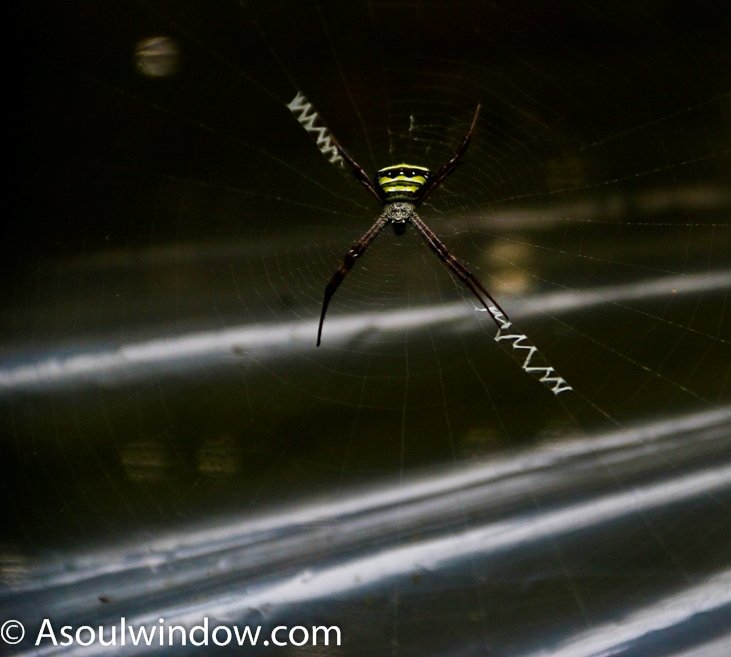
Sensitive to the ecosystem, Ritesh takes small groups of discerning travelers who are genuinely intrigued by the mysteries of the wild. Janani Krishnan, Ritesh Kothari and Rochana Poddar from Mumbai took a break from their busy corporate lives and accompanied us. Their enthusiasm for the trip was palpable when they spotted some well camouflaged species themselves and listened attentively when Prashanth P (Research Station Master) and Sujan Bernard (naturalist) discussed snakes.
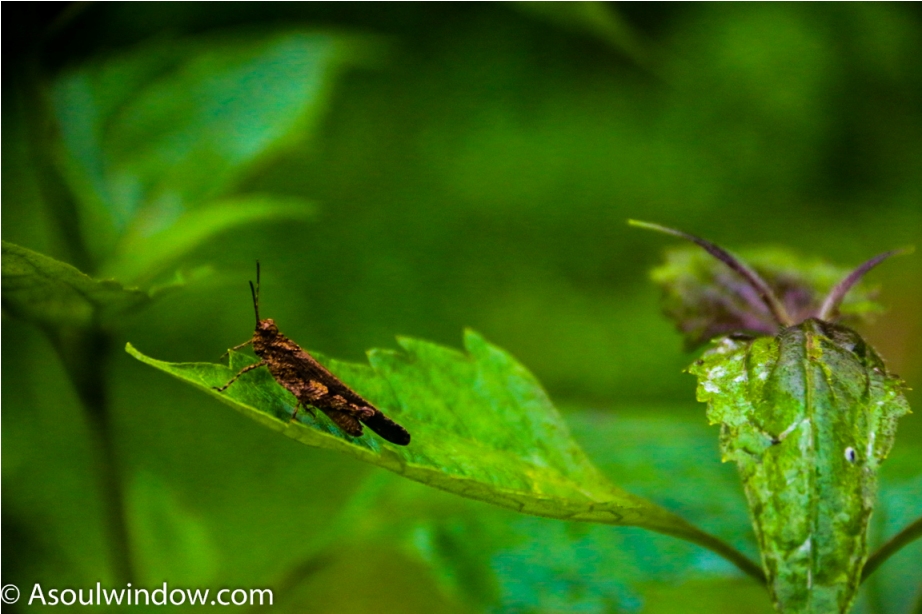
Both Prashanth and Sujan work at Kalinga Centre for Rainforest Ecology founded by P. Gowri Shankar in 2012. They research, conserve and even rescue King Cobras (Ophiophagus hannah). Gowri Shankar has been featured in documentaries like
- The King and I on the BBC
- Secrets of the King Cobra on the National Geographic Channel
- Asia’s Deadliest Snake on Nat Geo
- One Million Snake Bites on BBC and
- Wildest India on Discovery Channel
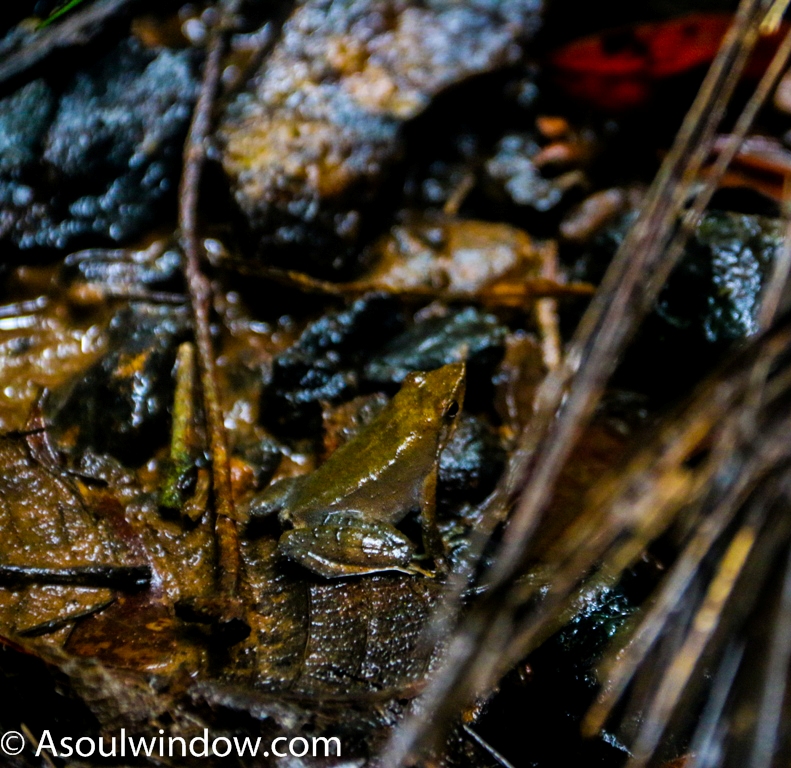
Sujan has also handled King Cobras for shows on similar channels. While we were still there, Sujan received a call on their helpline number for a rescue. The locals, unlike so many parts of India, don’t kill the snake. They revere the snakes, especially the King Cobra, which is colloquially called Kalinga.
King Cobras are elusive in the monsoon. There was thin chance that we could spot one. However, there were many more species on our mind and we managed to spot quite a few. We went for many trails including 2 trails in pitch dark nights.
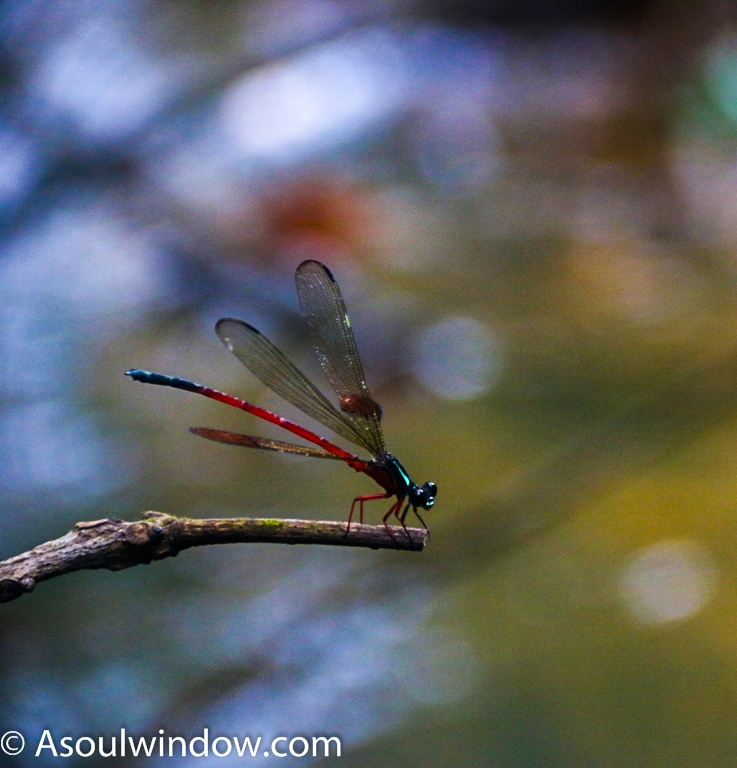
Table of Contents
Day 1 of the Agumbe Rainforest Expedition
On the first day itself, after breakfast, as we were bracing ourselves for a leech infested walk through the jungles, Prashant urged me to come near a tree next to the dining hall. It took me a while to spot the green vine snake aka flatbread snake (Ahaetulla nasuta). Quite similar to the green vine snake (Oxybelis fulgidus) found in Central and South America, it is long and slender and moves slowly like a chameleon.
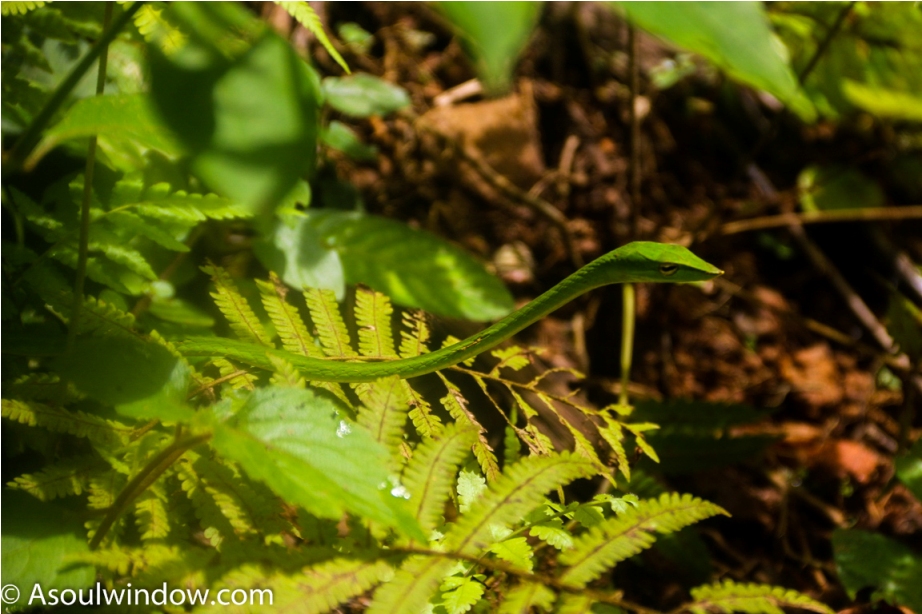
Its movement was so hypnotizing that often I used to just shut my camera and observe its gait. Being a diurnal snake, it was easy to spot in day, as was evident in another sighting the next day. On second day, we spotted another green vine snake, yawning and basking in the sun, perhaps as a result of heavy downpour the previous night. With zilch movement, it looked like a twig of a shrub. Only Sujan’s expert eyes helped us spot it. Mildly venomous, it feeds on lizards and frogs.
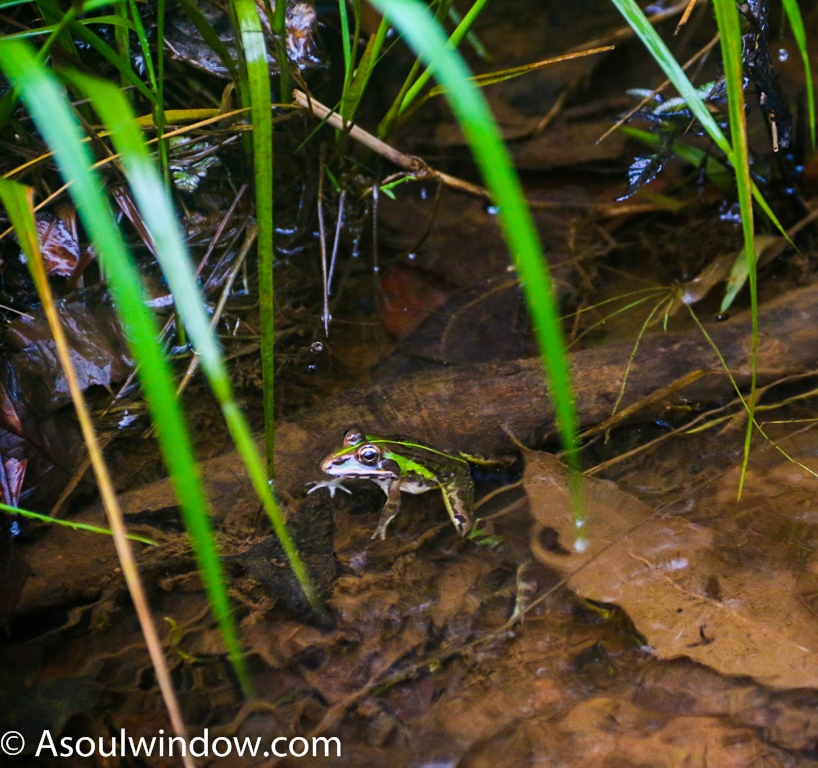
A white spider (unidentified, pls see picture) played hide and seek on a leaf. A signature spider was busy expanding his kingdom on a tree as we proceeded for the first walk in to the forest. An Indian Bull frog (Hoplobatrachus tigerinus) cleverly camouflaged, sat quietly on a slushy ground.
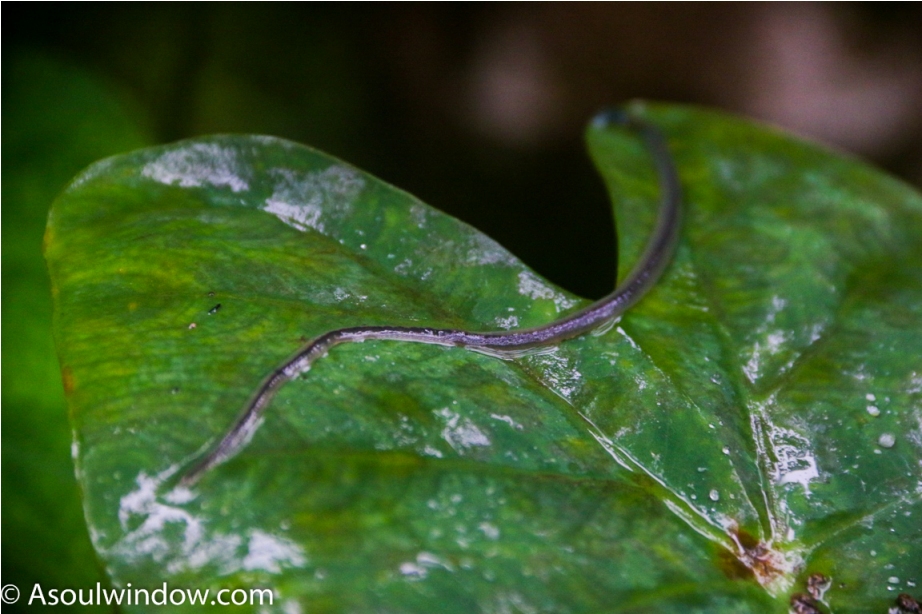
It ignored our presence and continued pretending to be a leaf. It was green in color. I was told that with age, it becomes grey in color. It is commonly found in India, Nepal, Pakistan, Afghanistan, Myanmar and Bangladesh. A delicate red and black Damsel fly justified its name as it sit meditatively on a twig.
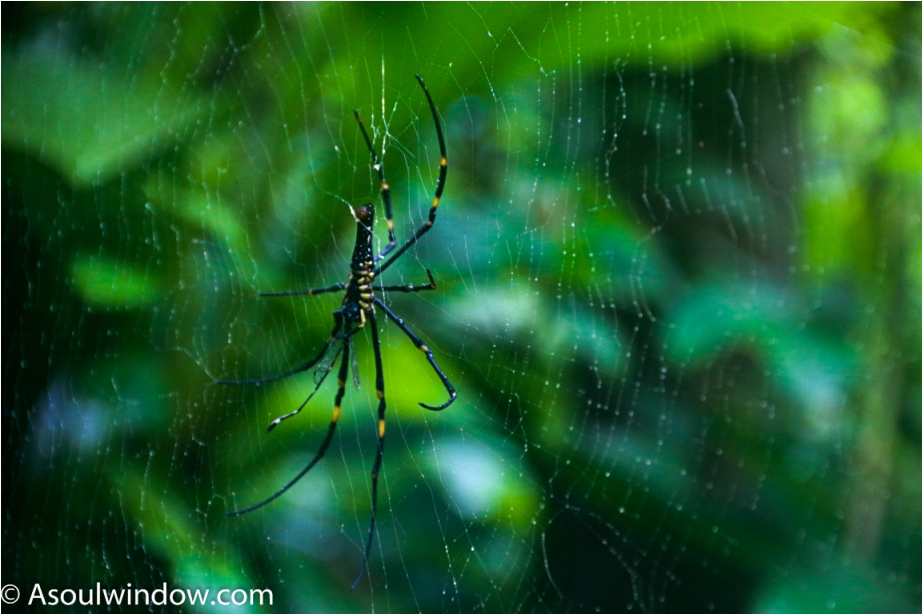
Damsel flies are sexually dimorphic pretty much like the female Wood Spider (Nephila pilipes ) which busied itself dining on a lifeless dragonfly nearby. It was amusing to see that the female spider was much bigger than the male. While females (black) can grow up to 30-50 mm, males (bright orange) are as tiny as 5-6 mm, making it 4-10 times smaller. No one answered my sexist remark, “How does that even work?” I found female gigantism and male dwarfism both amusing and baffling.
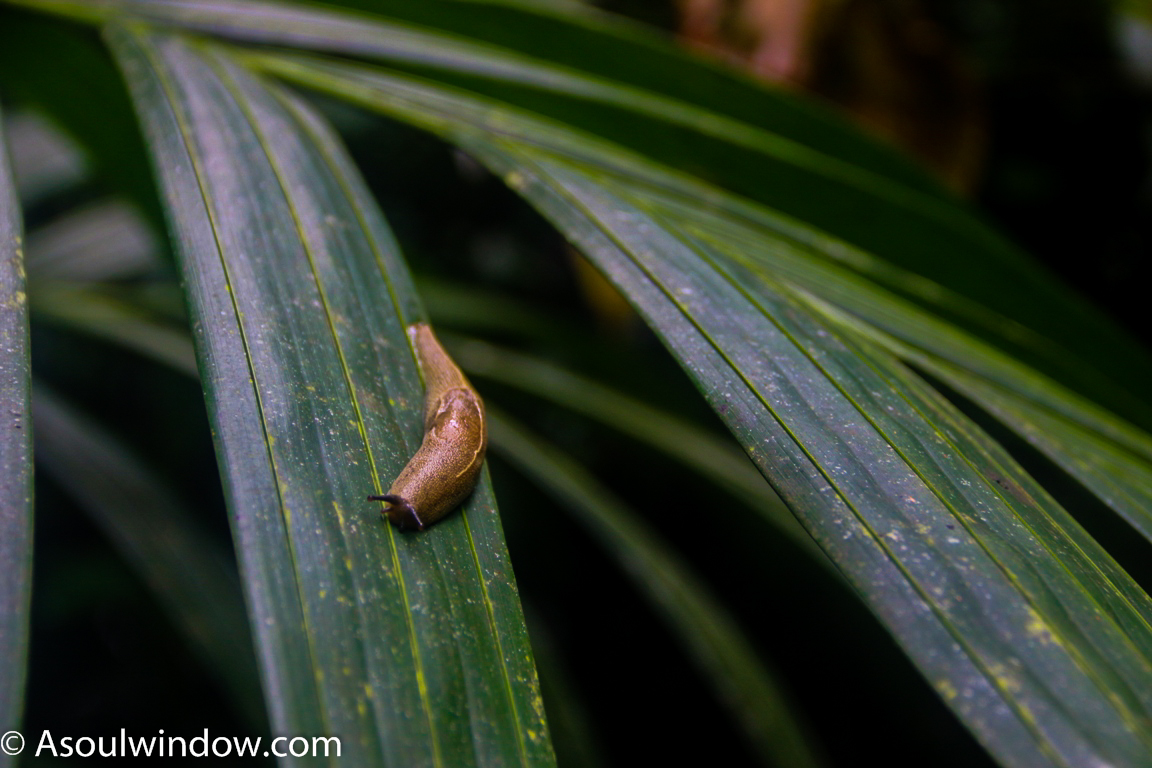
We passed through the farmed land, spotting slugs and translucent earthworms (lazing on a leaf) to arrive at a clearing. It ended at a water body, pregnant with the abundance of August rain. Negotiating the shallow water streams on foot in dense jungle, we stopped in our tracks, when Ritesh pointed to a tiny creature in a hush-hush tone.
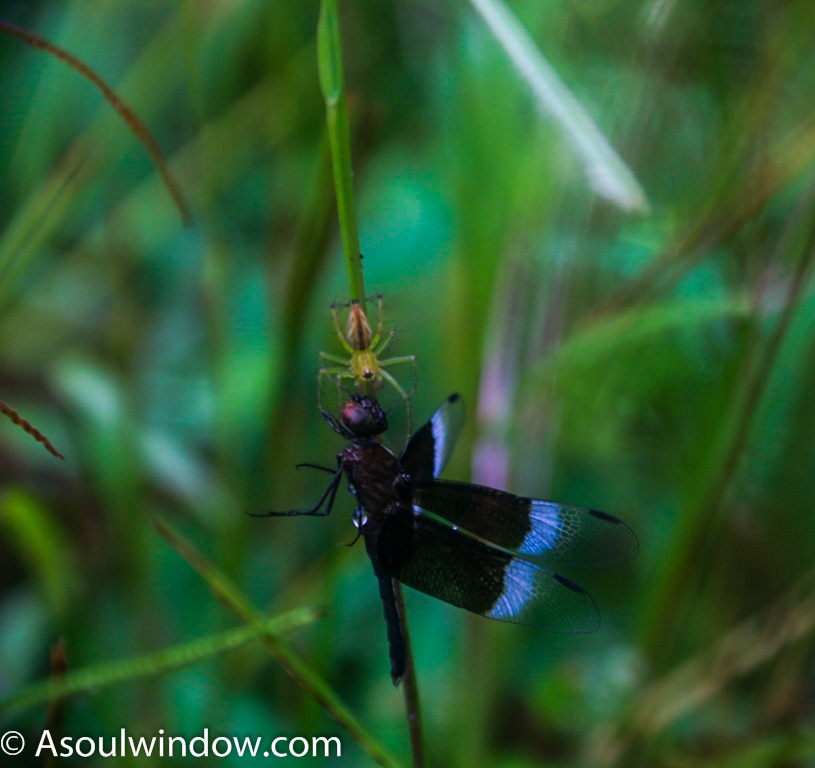
We got down to our knees and in absolute silence admired the tiny Kottigehara dancing frog (Euphlyctis cyanophlytis). They have a typical habit of shaking their feet to garner female attention during the mating season. Hence the name! Their other common names is Indian skipper frog.
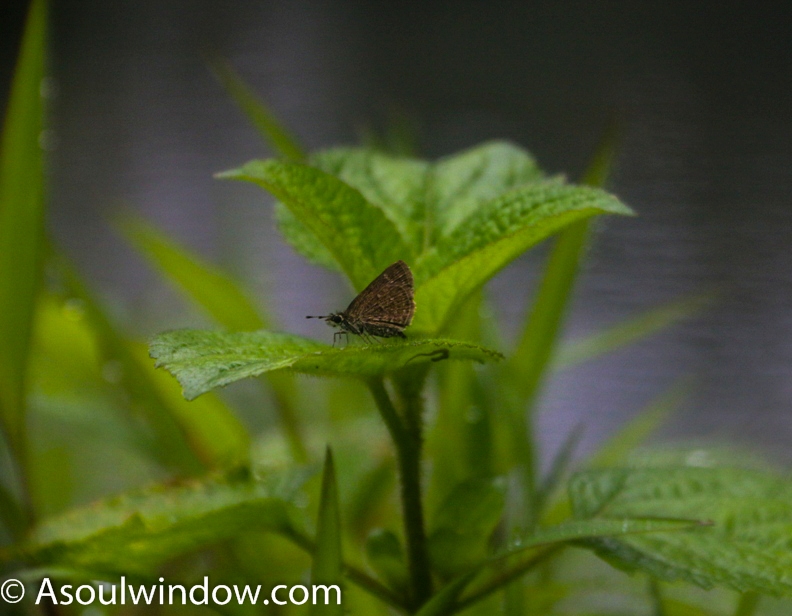
Water scorpions (Nepidae) zipped past swiftly in the water stream. Water scorpions are not really scorpions. They are tiny aquatic Heteropteran insects which look like scorpions. In another pool of water nearby, skittering frogs rested under water nonchalantly. It camouflaged itself well blending with the color of mud beneath water. The more easily spottable tadpoles (black and bigger in size) swam in the pond poetically. The water was so clear we could see all the creatures easily.
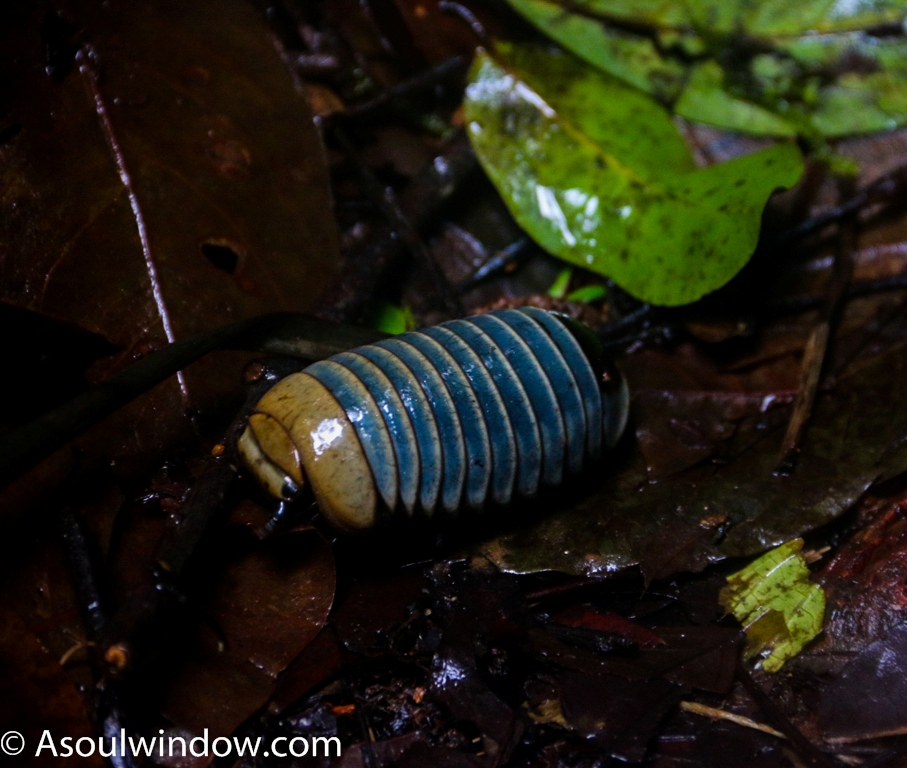
The most visually appealing (for me) creature we spotted on this day was Pill Millipede. Fat and blue in color, it crawled slowly in the undergrowth. It turned in to a ball (or pill) the moment it sensed our presence. The 11 to 13 segments on its body, allows it to roll and protect itself from predator. The locals call it ‘Roli Poli’. They are detritivore, i.e., they feed on decomposing plant matter. We also spotted Malabar Torrent dart. I spotted them again 2 days later in Java Rain Resort in Chikmanglur.
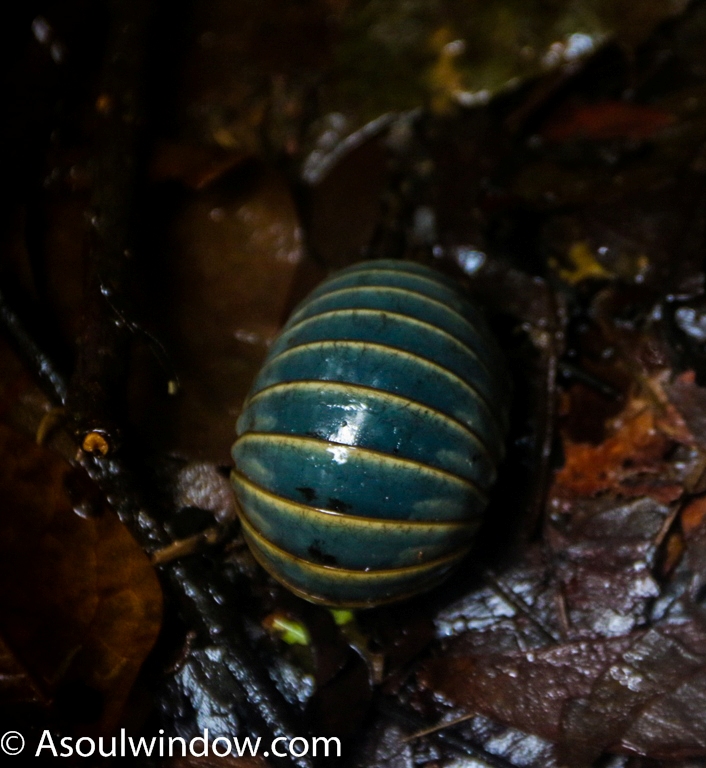
Day 2 of the Agumbe Rainforest Expedition:
The previous night, we went on an exciting night trail in the rain forest of Agumbe where we spotted snakes like pit viper, rat snake and other gems like tarantulas, bioluminescence etc.
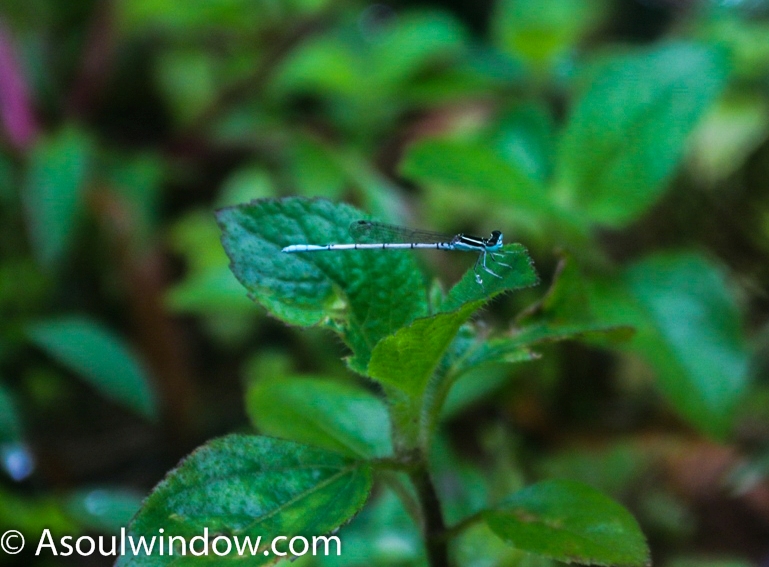
I woke up on second day in my tent to the melodious song which Malabar Whistling Thrush (Myophonus horsfieldii) made. I am a fan of the whistling sound which the bird makes. It is more melodious and versatile than the over rated cuckoo sound. The last time I heard the bird sing was when I stayed at my friend’s traditional home in Kankavali (Sindhudurg district, few hrs away from Goa.) Their whistle is human like, hence they are also affectionately called Whistling Schoolboy. (Google up their whistle) They whistle mostly in dawn.
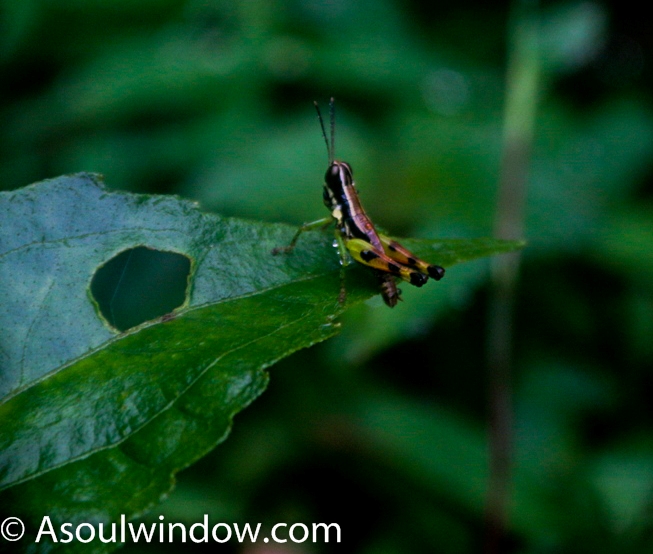
I stepped out and listened to more amazing morning sounds of the forest. A woodpecker drummed on a tree. The sound was quite strong and reverberated around the jungle alternating with the sound which Malabar Giant Squirrel (Ratufa indica) made. I saw none of the above, but they made their presence felt with their distinct sounds.
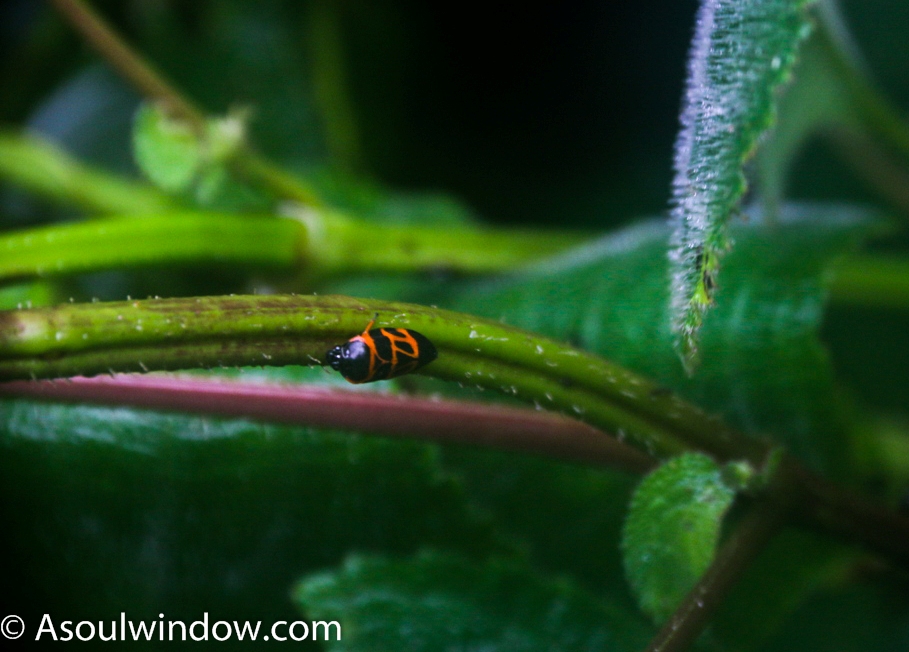
However, I did have a fleeting glimpse of a pair of Whistling ducks swimming languorously in the small pond near the Kalinga Centre for Rainforest Ecology. It was a beautiful morning for sure. Later during the day trips, we spotted varieties of grasshoppers, Blister beetle, Damsel fly, dragonflies, katydid (leaf insect). I was awed by the camouflage of katydid. Its shape and color made it look like a leaf.
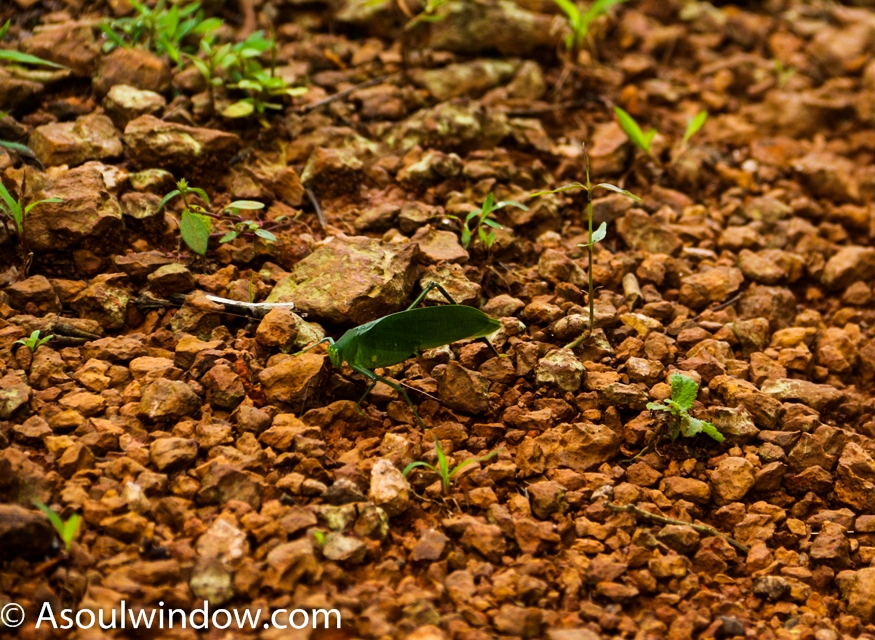
Just when I was taking my afternoon nap, a coral snake visited the camp area. Disappointed that I missed a chance to see one, I was praying that it appears again. After few hours, I did see one sliding in the undergrowth.
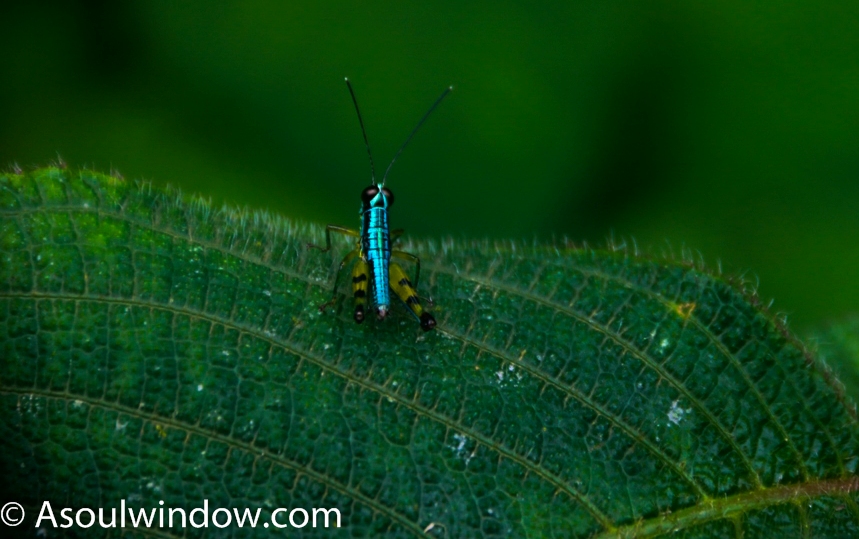
Day 3 of the Agumbe Rainforest Expedition
We braved leeches and passed nests of Funnel web spider to arrive early morning at the Akkibatha Rashigudda peak. It was a small uphill hike. It’s only after reaching the peak, I fathomed the scale of the dense rainforest of Agumbe. Sujan, who has worked in BBC and Nat Geo documentaries, told us that only secondary forest (new forest cover) remains today.
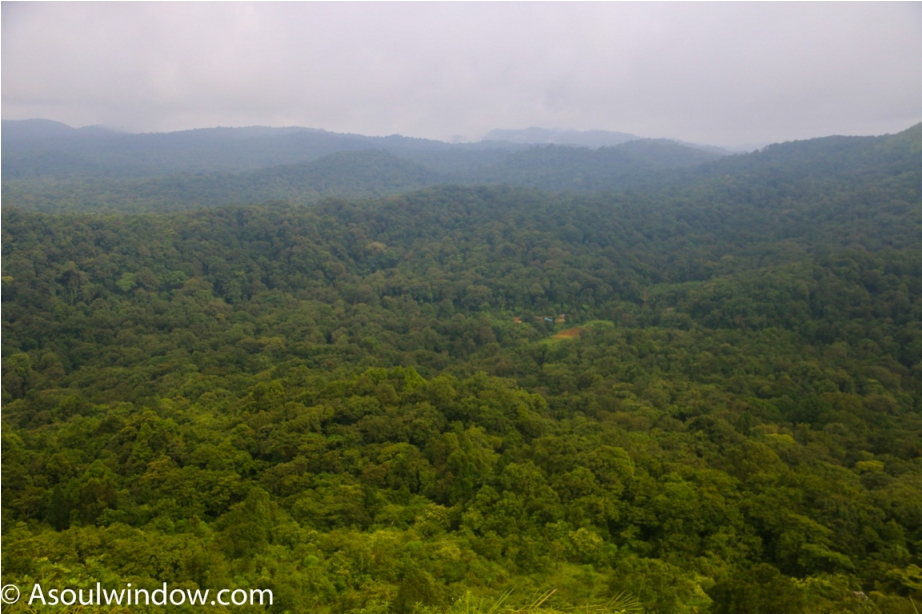
The primary forest (Trees around 100 years old) has fallen prey to human activities in the area. As the green cover shrinks, the balance in the ecosystem suffers. I realized the urgent need of wildlife and forest conservation and habitat protection. You get that perspective only after spending quality time spotting many species of endangered snakes, insects, birds, frogs. The sheer number of species I spotted in just 2 days is overwhelming. No wonder Western Ghats (I love them more than Himalayas) have rich bio diversity. And oh, we heard a tiger roar from the peak. If only we could spot orange and black stripes amidst the dense green foliage. This was one of my most fulfilling and enriching trip of the year so far.
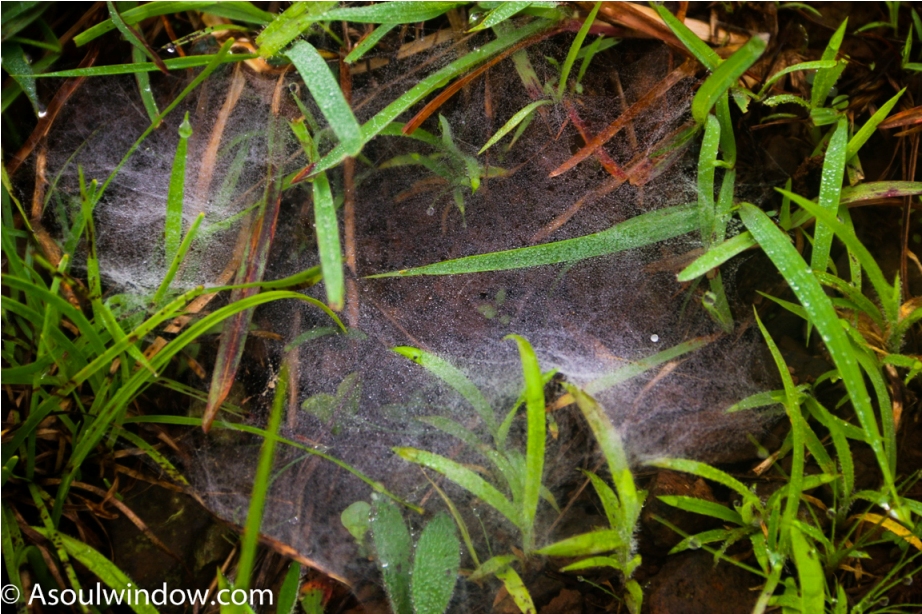
As we were about to leave, a Blue Mormon butterfly (Papilio polymnestor) took fancy to my Wildcraft shoes drying in the sun. The official ‘state butterfly’ of Maharashtra (Indian State) hovered around my shoes as I watched in amusement. It was our way of saying good bye to each other.
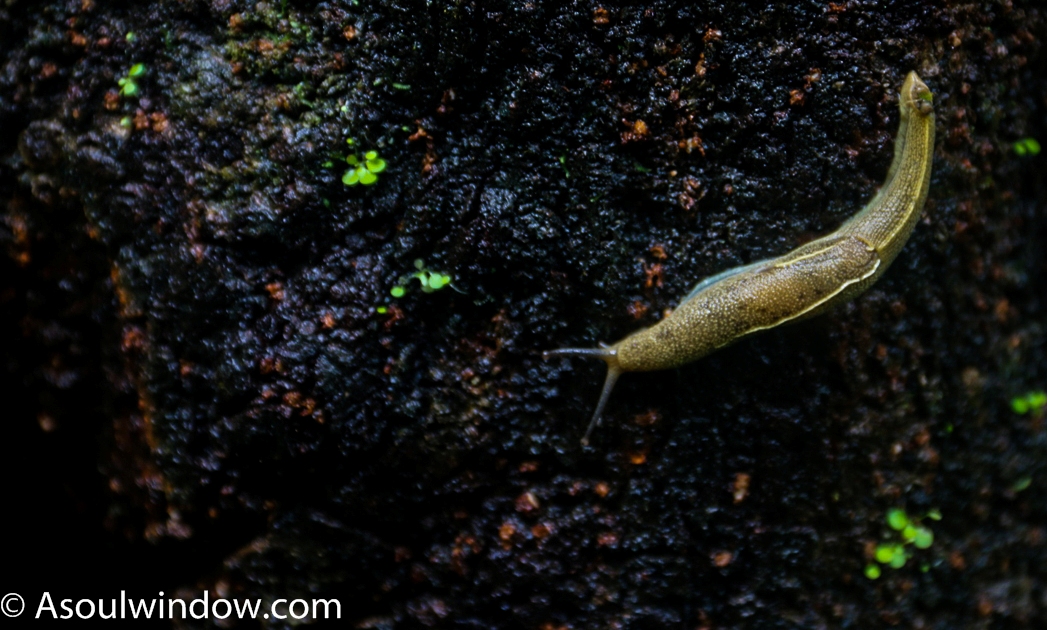
How to plan a trip to Agumbe
You need expert guidance in Agumbe to spot species. In my earlier solo trip to Agumbe, I failed to spot any species. I would recommend curated experiences by i Travel Group . It is a Mumbai based company headed by Ritesh Kadam. Ritesh takes batch of discerning travelers who yearn to learn something new on meaningful trips such as this. Passionate and knowledgeable about wildlife, Ritesh offers many enriching travel experiences in a responsible way. His trips are sensitive to local environment and culture. You can contact him at [email protected] or call him at +91 9503839398 for enquiry or booking.
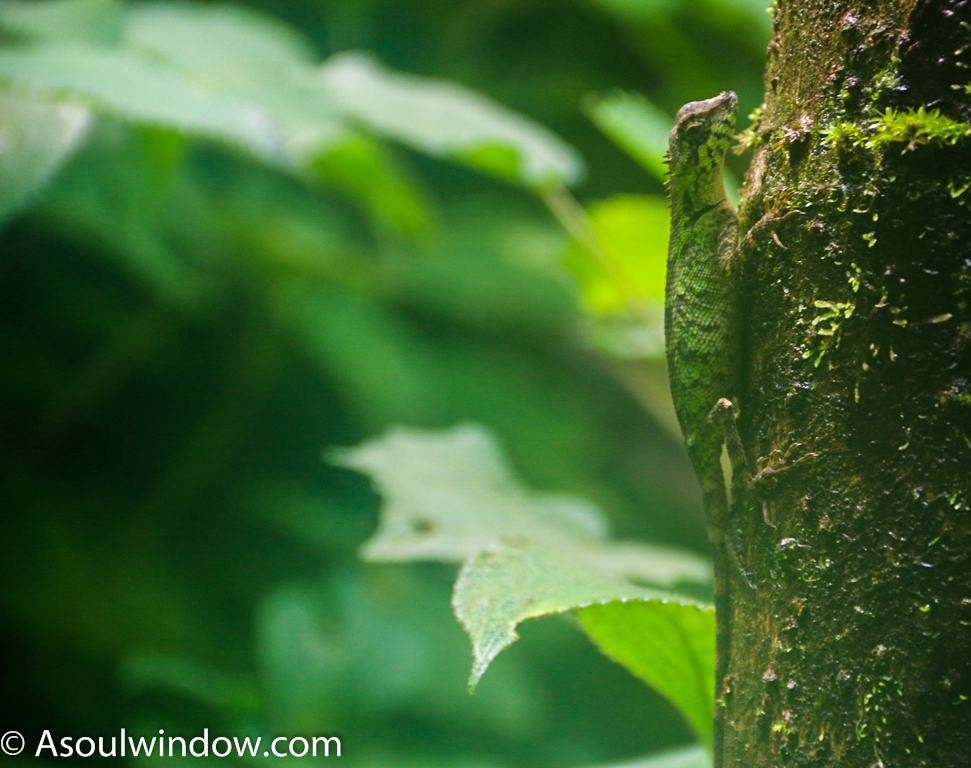
Kalinga Centre for Rainforest Ecology, Agumbe has good facilities. They have documentary shows, educative workshops on snakes, accommodation in clean and dry tents and superb meals. The in-house chef Pramod BS served us sumptuous South Indian meals such as Kadabu, Kokum Rasam, Upma and Kesari Bhath flavored with clove.
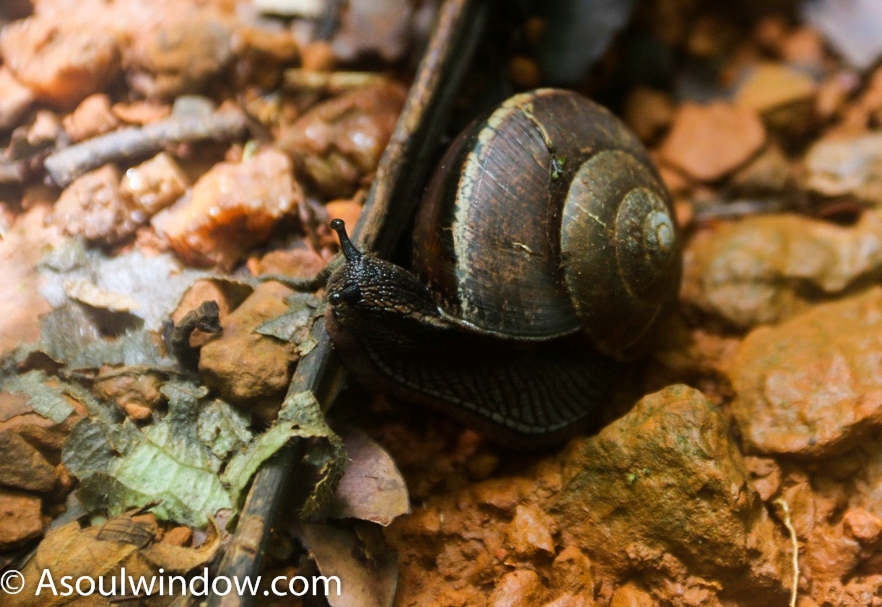
Recommended book on snakes of India
Snakes of India – The Field Guide by the famous Romulus Whitaker and Ashok Captain is a must read for all information on Indian snakes.
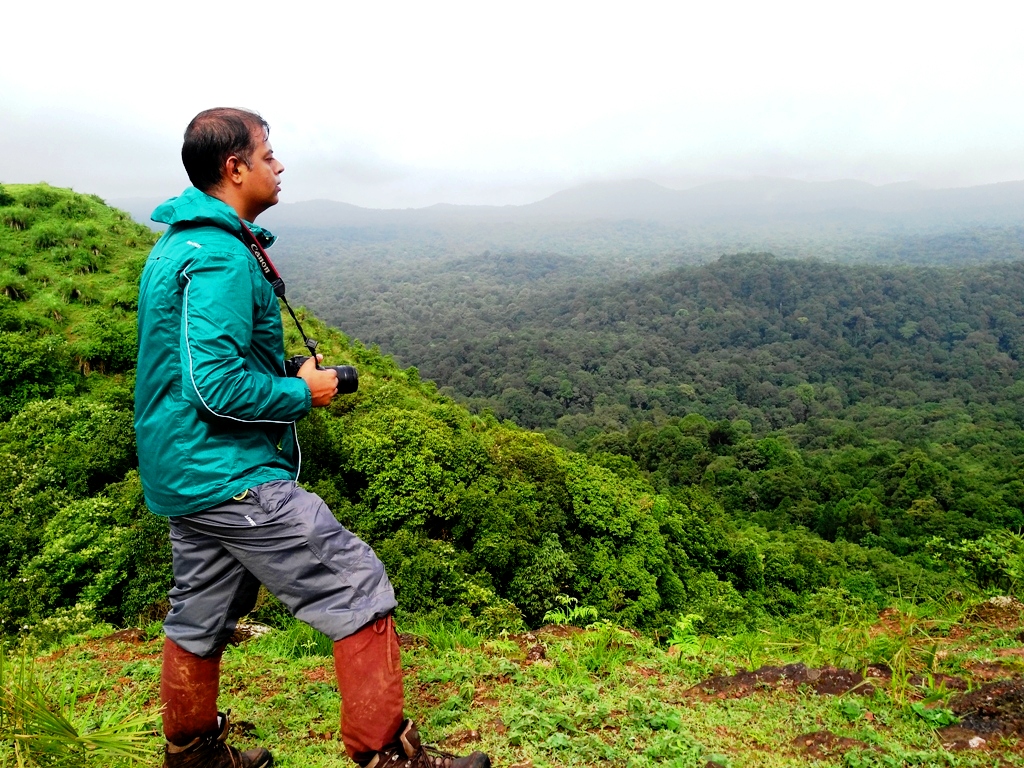
How to ward off leeches
In a rainforest like Agumbe, presence of leeches is common. It is nothing to worry about. They are harmless creatures. If you take good precaution, you can minimize the number of leeches getting on your body. I easily picked leeches from my body and sent them back to jungle. In case you are squeamish about it, you can use a tissue paper, simple paper or even a leaf to pull them off your skin. I don’t recommend putting salt on them. There is no need to kill them when you can get rid of them humanely. Never wash a leech injury with water. Blood caused due to a leech bites doesn’t clot. Wipe off the injury with paper and cover it with another clean paper till the flow stops.
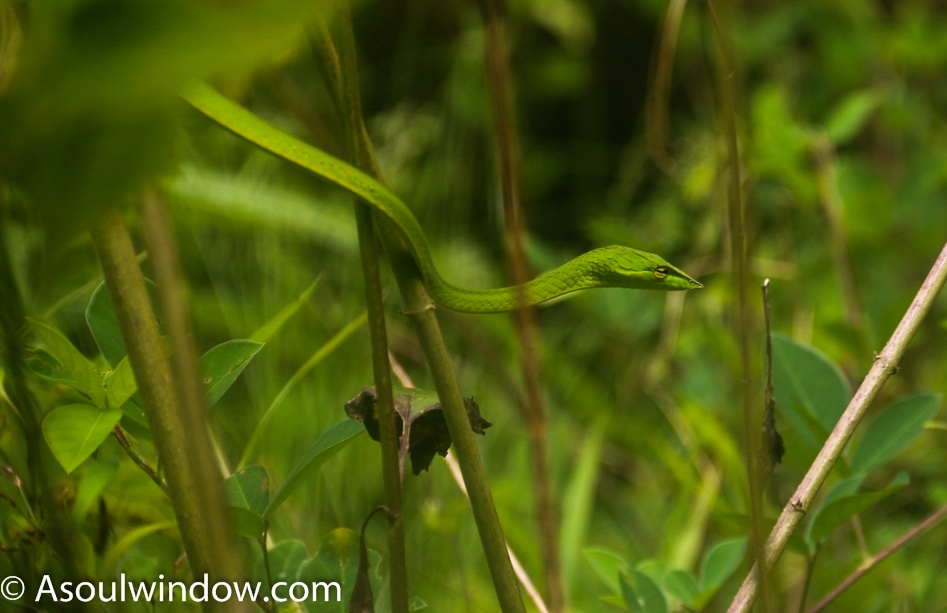
Responsible Tourism In Agumbe Rainforest
Pls remember Agumbe is not your serene picnic spot. It is an ecologically sensitive zone. Below are some pointers which you must take care of:
- Please be careful while walking. Watch your steps as you might crush a creature. Best is to take baby steps.
- Take pictures but
- Don’t touch any of the creatures.
- Don’t pluck any plant material
- Don’t collect any specimen of flora or fauna from the jungle.
- Don’t talk or sing loudly.
- Don’t litter. Pack your non biodegradable waste and dispose off to the nearest city Udupi or in your home city.
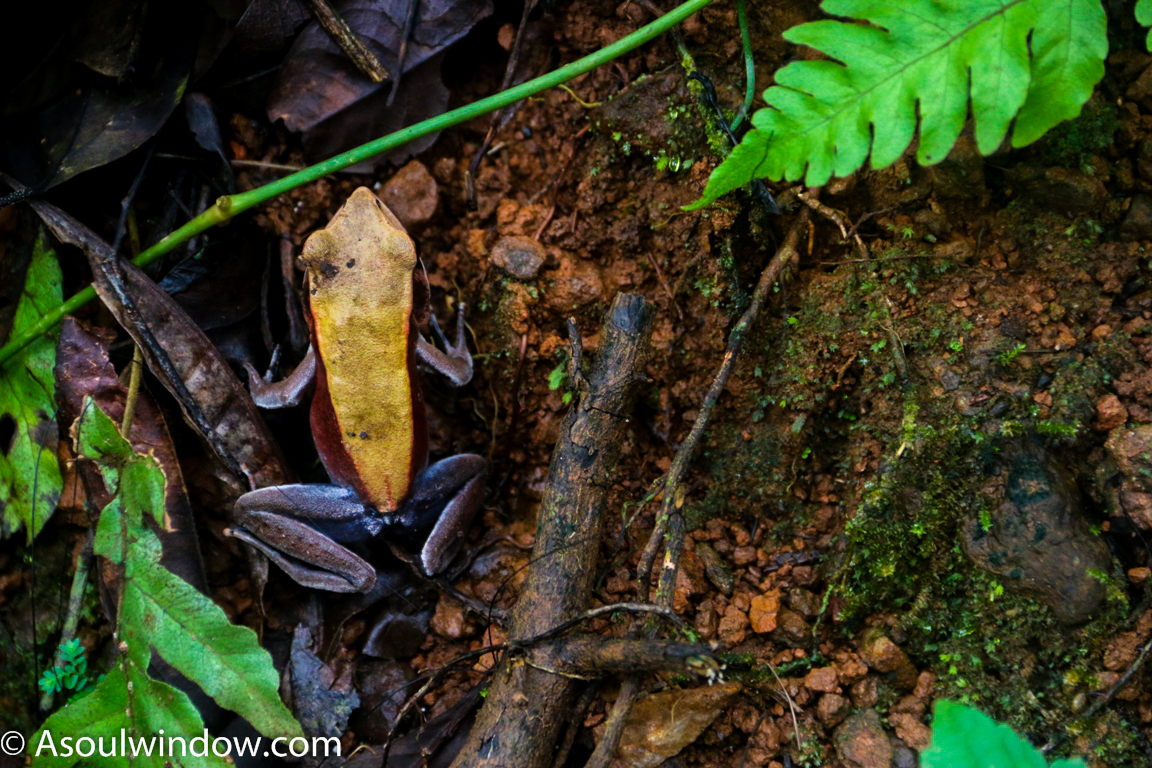
Top Tips for an expedition to Agumbe Rainforest
- Carry flashlights for night trails.
- Keep your camera in a box filled with silica gel, so that it absorbs moisture and prevents fungus on lens.
- Carry macro lens. Kankavali,
- Read a bit about snakes before the trip starts and after it ends.
- Carry some snacks. You can buy banana chips, fruits etc from Someshwara, just an hour away from Agumbe if you are coming from Udupi.
- Take a loo break at Someshwara when coming from Udupi. The loo was very clean.
- Carry Rain Gears, mosquito repellent, umbrella and sturdy shoes.
- Combine a trip with Udupi. Even Agumbe can be extended by one more day. There is a lot to see in Agumbe. (Read: waterfalls, trekking trails and the ‘Malgudi Days’ house near the Bus stand)
Night Trail In the Rainforest of Agumbe
I spotted this huge Katydid. It camouflages itself and looks like a leaf. Hence the moniker – Leaf Insect. Agumbe Rainforest Night Expedition. The wettest place in South India.
After an eventful morning spent in the forests of Agumbe, we were gearing up for the night trail after the sumptuous South Indian lunch and nap. But before we ventured out in the dark, we spent the evening watching documentary on snakes and also an informative presentation on snake followed by question and answer session.
Once the presentation got over, every one headed to the dinner table, while I came out to the lawn area. I was attracted by the yelping of dog pups coming from different directions. It was pitch dark and I tried hard to locate the pups. Failed to spot one, I asked one of the snake researcher at the Kalinga Centre for Rainforest Ecology founded by P. Gowri Shankar in 2012. Turned out it was a bunch of bi-colored frog aka Malabar frog (Clinotarsus curtipes) who were making those distressed calls. I was amused at the uncanny similarity. These frogs are found in the Western Ghats of India. Thanks to its appearance, it was the weirdest looking creature I spotted in Agumbe.
I left the frogs alone. Post dinner as we started wearing our leech socks for the night trail, Agumbe decided to justify the moniker it has earned over the years – The wettest place of South India. It started raining heavily and showed no sign of stopping. The sport that we were, none of us backed out from the night trail. I decided not to carry camera. We took baby steps as Prashanth P (Research Station Master) led us through the dark forest, supported only with flashlights. Rains lashed us from all directions. Unperturbed and dry under our raincoats, we trained our eyes on spotting the rare creatures which the forests of Agumbe are famous for.
Our first success was spotting a Malabar pit viper (Trimeresurus malabaricus). Also known as Malabar rock pit viper or rock viper, it perched on one of the upper branches of a tall tree. Unfazed by the torrential rains, it sat in one position for as long as we observed it. In fact, the next day, when we spotted the Malabar Pit Viper again in the morning, it was still sitting on the same branch. These are venomous snakes found in southwestern India (mostly Western Ghats). They are easier to spot in the monsoon months. Being nocturnal, they are mostly inactive during the day.
They feed on geckos, musk shrews, tree frogs etc. Speaking of which, we spotted the Coorg Yellow Bush Frog (Raorchestes luteolus) hidden behind a leaf on the opposite tree. Its synonymous scientific name is Philautus neelanethrus. It was an exciting spotting for me since I saw a frog on a tree for the first time ever. I have no idea how it got there. Perched approximately 1 meter from the ground, it made constant mating calls. During vocalizing, the vocal sacs of the Yellow Bush Frog expanded in to a sac/ball/bubble, indicating that it is a male. The expanding helps them to make louder sound. The vocal sac is the flexible membrane of skin. The purpose of croaking in this fashion is either to keep away other male frogs or mating, of course. Yellow Bush Frog is not to be confused with aorchestes travancoricus Kalpetta yellow bush frog (Raorchestes nerostagona)
Did you know scorpions glow in dark?
A little ahead, the team congregated at the foot of a muddy wall. A scorpion hid itself amongst dead leaves and mud. I learned scorpions are easiest to find in the dark? As Prashanth focused his ultraviolet (UV) flashlight light on the scorpion it cast a tantalizing glow on the unsuspecting scorpion. It glowed a vibrant blue green, standing out in pitch dark. The scorpion glowed only when UV light was focused on it. No theory has been established yet as to why they glow or what’s the function of this attribute?
Bioluminescent Fungi in the rainforests of Agumbe
Thanks to the presence of glow worms, fireflies and glowing scorpions in the pitch dark forest of Agumbe, we already saw much natural glowing on 2 night trails. But the best was yet to come. We saw bio luminescent fungus under the foot of a tree on first night and another one in a more scenic location, which is, on the sides of a shallow water stream. All of us would switch off our flashlights and small sections in the undergrowth would glow magically. Since it was pitch dark, the glow was easy to spot. The fireflies hovering around us added to the drama. We stood there agape mouthed, in absolute silence, our shoes soiled with mud and water. It was one of the most magical phenomenons I had seen in a forest. The faint green glow becomes stronger when the eyes adjust to it.
More snakes spotted – Rat snake this time
The other snake we spotted in the night trail in the rainforest of Agumbe was the rat snake (Ptyas mucosa). It perched still on the top of a small plant. Allowing rain to wet it, the tiny snake coiled and made no movement. Unlike the pit viper, it was quite at a touching distance. It feeds on rodents, toads, small birds, other snakes, lizards and eggs. It is, however, often the meal of the King Cobra.
Other species we found on the night trail in the rainforest of Agumbe:
Tarantula, Common Indian Toad, Indirana frog, Tiger centipede, House centipede, Cricket, Roux’s forest lizard (Calotes rouxxi ) were the other species we found in the rainforest of Agumbe on 2 nights. We even spotted the exoskeleton of cicada. We were amazed to see that the exoskeleton was not destroyed and retained the shape of the cicada. Quite a smooth exit, that!
Roux’s forest lizard is endemic to the western ghats of India. Its habitat is varied viz. moist evergreen, secondary forests and dry scrub. It is insectivore and hunts during the day.
Where to Stay in Agumbe?
Kalinga Centre for Rainforest Ecology, Agumbe has good facilities. They have documentary shows, educative workshops on snakes, accommodation in clean and dry tents and superb meals. The in house chef Pramod BS served us sumptuous South Indian meals such as Kadabu, Kokum Rasam, Upma and Kesari Bhath flavored with clove.
Responsible Tourism In Agumbe Rainforest
Pls remember Agumbe is not your serene picnic spot. It is an ecologically sensitive zone. Below are some pointers which you must take care of:
- Please be careful while walking. Watch your steps as you might crush a creature. Best is to take baby steps.
- Take pictures but don’t touch any of the creatures.
- Don’t pluck any plant material
- Don’t collect any specimen of flora or fauna from the jungle.
- Don’t talk or sing loudly.
- Don’t litter. Pack your non biodegradable waste and dispose off to the nearest city Udupi or in your home city.
The views from my #SoulWindow shattered all the myths I had about snakes!
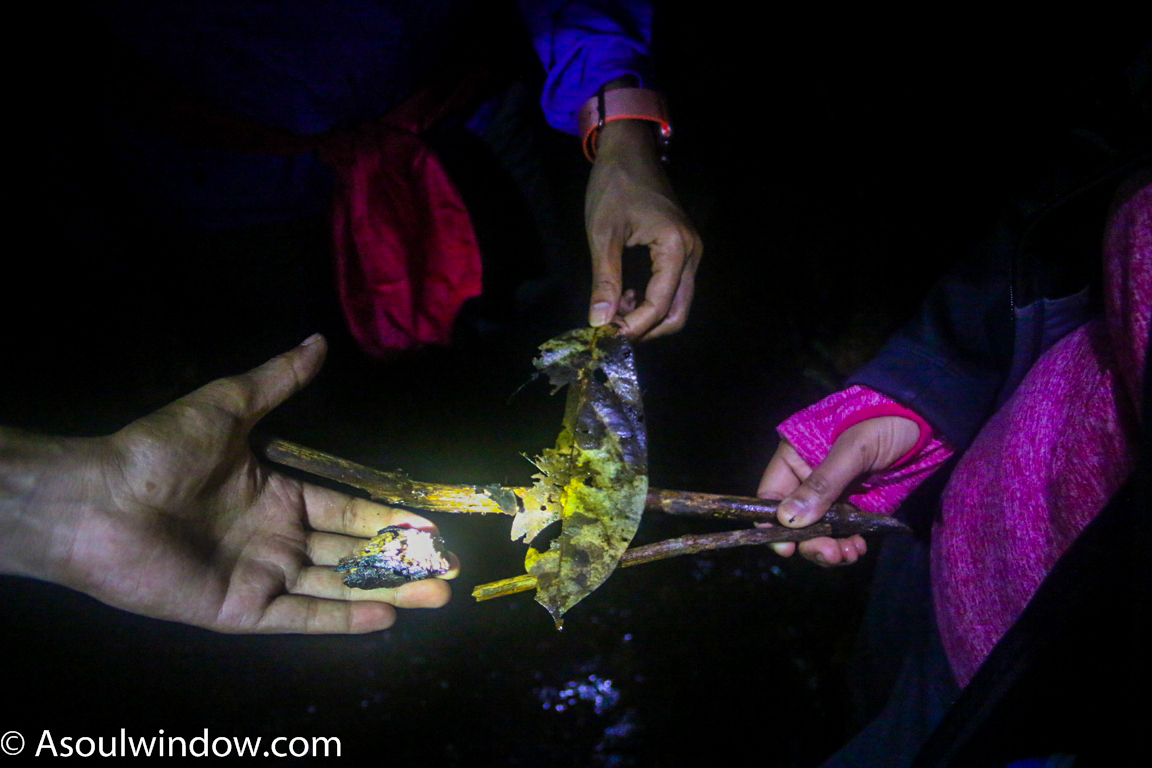
Spread the love, share this blog
Got any question/comments, ask in the comment section below so that it can benefit other readers.
Email me for collaboration: [email protected]
Be a part of my journey on social media. The travel content I create there is different from this blog.
Pls subscribe/follow/like:
WARNING : COPYRIGHT TO ALL THE TEXT SHARED HERE REMAINS WITH ME. YOU CAN NOT JUST LIFT THE CONTENT AND USE IT WITHOUT MY PERMISSION. STRICT LEGAL ACTION WILL BE TAKEN IF CONTENT IS STOLEN. YES, I AM SERIOUS.
Top Travel Blogger from India

Pingback: TOP 63 THINGS TO DO IN OFFBEAT PALOLEM PATNEM BEACH, SOUTH GOA – SOLO BUDGET BACKPACKING | A Soul Window - Top Travel Blog from India!
Pingback: TOP TOURISTY & OFFBEAT PLACES TO SEE IN COORG, MADIKERI IN 2 DAYS | A Soul Window - Top Travel Blog from India!
Pingback: Top Experiences of Wildlife Photographer Blogger From India – Self Interview | A Soul Window - Top Travel Blog from India!
Pingback: AWANTISWAMIN TEMPLE & AVANTISHWAR TEMPLE, AWANTIPUR – LOST HINDU TEMPLES OF KASHMIR | A Soul Window - Top Travel Blog from India!
Pingback: TOP 22 THINGS TO DO IN GOA!! | A Soul Window - Top Travel Blog from India!
Pingback: TOP TEN REASONS TO VISIT CANBERRA, CAPITAL OF AUSTRALIA: | A Soul Window - Top Travel Blog from India!
Pingback: BASAR CONFLUENCE AKA BAS CON – FESTIVAL IN ARUNACHAL PRADESH, NORTH EAST INDIA | A Soul Window - Top Travel Blog from India!
Pingback: Travel Bugs: How to plan a value for money vacation? | A Soul Window - Top Travel Blog from India!
Pingback: WHEN I SAW TIGER LIGHTNING T 83 ATTEMPT KILLING A SAMBHAR CALF- WILDLIFE AT RANTHAMBORE NATIONAL PARK, INCREDIBLE INDIA! | A Soul Window - Top Travel Blog from India!
Pingback: THRILLING SAFARI EXPERIENCE- 3 FEET AWAY FROM TIGER T34 AKA KUMBHA IN RANTHAMBORE NATIONAL PARK, RAJASTHAN , INDIA. | A Soul Window - Top Travel Blog from India!
Pingback: 2017 IS MY BEST TRAVEL YEAR AS BLOGGER FROM INDIA YET! A QUICK REVIEW! | A Soul Window - Top Travel Blog from India!
Pingback: COBRAS AT PUSHKAR FAIR- IS INCREDIBLE INDIA STILL A LAND OF SNAKE CHARMERS? | A Soul Window - Travel Blog from India!
Pingback: THE COLORFUL MARKETS OF PUSHKAR FAIR, RAJASTHAN- INCREDIBLE INDIA! | A Soul Window - Travel Blog from India!
I love your pics Abhinav. I have said that earlier and repeating it. I almost made it for this trip and did not owing to the dates. So regret not going. ah well! Next time
What a fascinating post. The small creatures of Agumbe are really a beautiful lot. Your pictures bring alive the colourful secret life of these creatures in vivid colour. I am sure this was a unique experience that is bound to stay etched in your mind for a long, long time.
What fascinating creatures! You are so lucky Abhinav to have seen such exotic species in their natural habitat.
Also, the dragonfly you have asked about in the post is actually a damselfly. Common bluetail damselfly.
I am sure Agumbe is a treat for the wildlife enthusiasts who love reptiles. The rain forest looks amazing and I loved reading about all the insects and snakes that you had a rare chance to spot and learn about. Such curated trips are worth joining in. They help to make the most a trip.
This looks like the ultimate way to see tiny creatures in the rainforest! I didn’t even know there was such a thing as a translucent earthworm! As incredible as the bio diversity is I would not be able to handle the spiders and millipedes and my husband is scared of moths- perhaps best if we live vicariously through you!
What a beautiful trek, it’s so lush there, I guess being the wettest place in south India helps! It looks like you dressed well for the occasion. You took some perfect macros of so many insects, rare shots as I’ve never seen these insects before. I would be a little nervous about leeches but I’m sure the guide will take good care of you!
Pingback: LUXUXY BREWED STRONG AT JAVA RAIN RESORT, CHIKMAGALUR- WEEKEND BREAK FROM BANGALORE. | A Soul Window - Travel Blog from India!
Looking at the pictures itself is giving me shivers ,I can imagine how thrilling it must have been and also painstaking to capture these rain forest dwellers .
It’s amazing how up close and personal you were able to get to all these creatures – your snaps of the Green Vine Snake are incredible, and it wonderful that your guide was able to spot him. It sounds like the i travel Group are the right company to do this trip with – with experts in the field, I am sure you had a very interesting and educational experience.
I am really very scared of insects 🙈 But your post is really amazing. The pictures are so fascinating and I would have never known these much facts about insects because of my fear 😀
Simply loved your blog. I know what I missed but fascinating to read your experience. So can be my guide for my agumbe expedition next ;0 😛 ?
The jungle is a thriving world on its own. Different and adventurous ….. loved the post!
As a person who loves being in the great outdoors, I just loved this post. Using a travel group like this one with their level of expertise really opens up a new and enhanced version of your outdoors experience with nature. Your photos that you managed to take and share are really fabulous. What a great experience.
I did NOT know water scorpions existed! You saw so many insects that I’ve never heard of or seen in person. What an interesting place to explore!
Wow you saw so many insects and creatures at the rainforest. Your photos captured them well. Some of these creatures look so tiny and could be missed easily. I’ll definitely need a guide to point them out for me!
Pingback: THE MIND BLOWING NIGHT TRAIL IN THE RAINFORESTS OF AGUMBE WITH i TRAVEL GROUP: INCREDIBLE INDIA | A Soul Window - Travel Blog from India!